First Aid for Smoke Inhalation
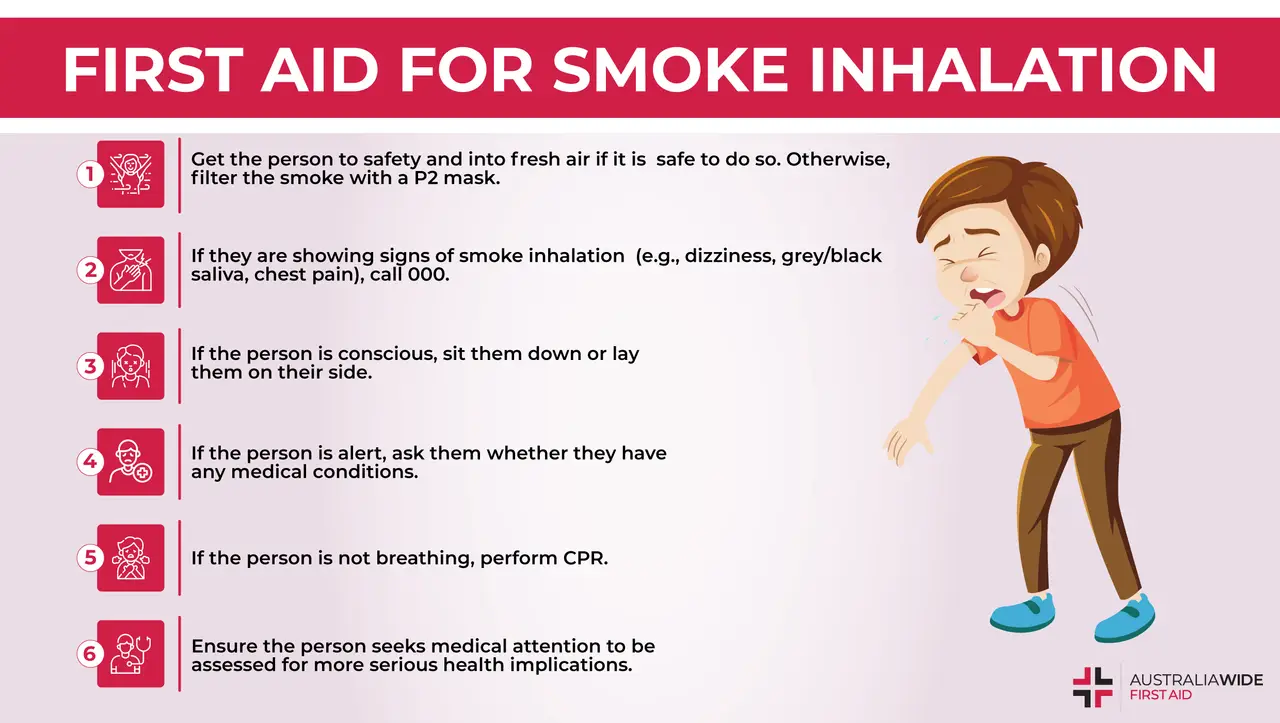

Smoke inhalation can cause several health problems, including lung damage, bronchitis and even cancer. In some cases, it can be fatal.
If you are unfortunate enough to experience smoke inhalation, it is important to know how to provide first aid treatment.
This article will provide information on the causes of smoke inhalation and the steps you need to take to provide first aid treatment.
Bushfires are common in Australia, with around 400 bushfires occurring each year.
Most of these fires are small and easily controlled. But occasionally, we experience devastating bushfires that can cause loss of life and extensive damage to property.
In the worst-case scenario, a bushfire can burn for weeks and destroy everything in its path.
In the last 10 years, there have been an average of 11 fatalities per year from bushfires. Most people who die in bushfires are caught by the fire while trying to escape. Around 60% of all fatalities occur while people are trying to leave their homes.
The total cost of damages caused by Australian bushfires is estimated at $4 billion per year. This includes both direct damage (such as loss of property and infrastructure) and indirect damage (such as business closures and job losses).
Smoke inhalation is one of the biggest dangers during a bushfire. The smoke produced by a bushfire can contain several harmful chemicals, including carbon monoxide, hydrogen cyanide and particulate matter.
It is important to know about smoke inhalation because it can cause various health problems, including lung damage, bronchitis and even cancer. In some cases, it can be fatal. If you are unfortunate enough to experience smoke inhalation, it is important to know how to provide first aid treatment.
This article will provide information on the causes of smoke inhalation and the steps you need to take to provide first aid treatment.
There are three main elements to bushfire smoke: gases, particles and water vapour.
Bushfire smoke is a mixture of gases and particles. The main gases found in bushfire smoke are carbon monoxide (CO) and nitrogen dioxide (NO2). CO is produced when the fire burns materials containing carbon, such as wood, petrol and coal. NO2 is produced when the fire burns materials containing nitrogen, such as leaves and grass.
Hydrogen cyanide (HCN) is another gas found in bushfire smoke. It is produced when the fire burns materials containing nitrogen, such as plastics and synthetic fabrics. HCN is a highly poisonous gas which can cause death within minutes.
The third main element of bushfire smoke is particulate matter (PM). PM is made up of tiny particles of soot, ash and other materials. These particles can be inhaled deep into the lungs and cause several health problems, including lung damage, bronchitis and even cancer.
The signs and symptoms of smoke inhalation can vary depending on the severity of the exposure.
Mild exposure to smoke may cause coughing, wheezing and difficulty breathing. More severe exposure can cause nausea, vomiting, dizziness, confusion and loss of consciousness.
Other common symptoms include:
If you suspect that someone has inhaled smoke, it is important to seek medical help immediately. The sooner the person receives treatment, the better their chances of recovery.
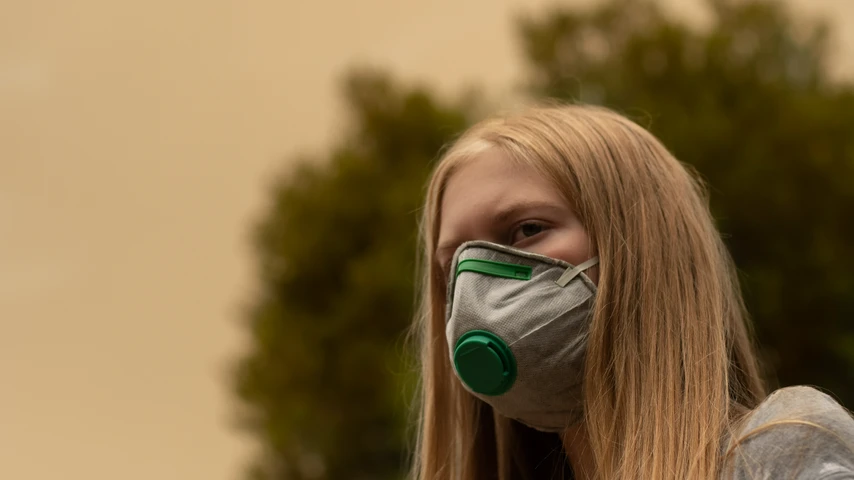
If you are with someone who has inhaled smoke, it is important to follow the steps below:
*If it is not safe to move someone to safety, filter the smoke for both you and the casualty with a P2 mask or cloth (cloth nappy or muslin work well).
There are various things you can do to protect yourself from smoke inhalation:
If you are caught in a bushfire, it is important to remember that the safest place to be is indoors. If you cannot get indoors, it is important to find a sheltered spot and stay there until the fire has passed.
First and foremost, the best way to prevent smoke inhalation is to prepare a Bushfire Survival Plan. As the name suggests, Bushfire Survival Plans allow you to plan for the best chance of survival if you decide to evacuate or defend your home in the event of a bushfire.
Regardless of whether you choose to evacuate or defend your home, it is important to take proactive action to protect your home from catching fire. For more tips on how to prepare your home for bushfire season, head to the following article in our Resource Library. We also have an article outlining when it is and is not safe to stay and defend your home in a bushfire.
If you have asthma and inhale smoke, it is important to follow your Asthma Action Plan. You may need to use your reliever medication more often than usual and you may need to increase the dose. If your symptoms are getting worse, seek medical help immediately.
If you do not have an Asthma Action Plan, it is important to see your doctor as soon as possible so that one can be developed. These gases can irritate your lungs and make it difficult to breathe. The particles in bushfire smoke can also irritate your lungs and cause coughing and wheezing. If you have asthma, it is important to stay indoors as much as possible when bushfire smoke is present. If you must go outside, wear a mask or scarf over your nose and mouth to filter out the smoke particles.
It is also important to keep your Asthma Action Plan up-to-date and to always have your reliever medication with you. If you do not have an Asthma Action Plan, see your doctor so that one can be developed. If you experience difficulty breathing, coughing or wheezing, it is important to use your reliever medication and seek medical help immediately.
People with asthma may have a more severe reaction to smoke inhalation than other people. If the person is conscious apply the following plan.
Please note, if someone is showing signs of a severe asthma attack, you should call an ambulance immediately and follow this Asthma First Aid Plan until it arrives. For more information about treating asthma in a bushfire, head to the following article in our Resource Library.
Bushfire smoke contains harmful chemicals and particles that can cause injury to the lungs.
If you are affected by bushfire smoke, it is important to seek medical attention. However, there are also some things you can do yourself to help relieve symptoms until you can get medical help.
For more information on how to recognise and treat the signs and symptoms of bushfire smoke inhalation, book a First Aid course with us today.
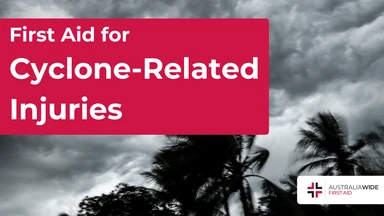
March 3, 2025
Injuries during cyclones often result from flying debris, collapsing structures, and flooding. Knowing basic first aid can help prevent further harm while waiting for emergency services.
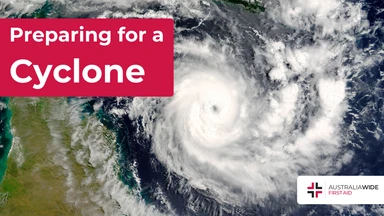
March 3, 2025
If a cyclone makes landfall, meaning that it crosses from the sea onto land while still being strong enough to be classified as a cyclone, the damage it can cause can be disastrous. Preparation is key to minimising the risks associated with cyclones. The damaging weather can last for days, exacerbating risks as hazards intensify.
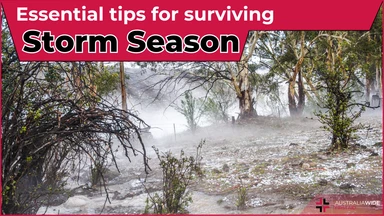
November 1, 2024
Severe storms are a common and dangerous occurrence in Australia, particularly in regions like Queensland. These storms can bring large hail, damaging winds, heavy rain, and occasionally tornadoes, all of which can put both people and property at risk. Preparing for and responding to severe storms effectively is key to ensuring safety.